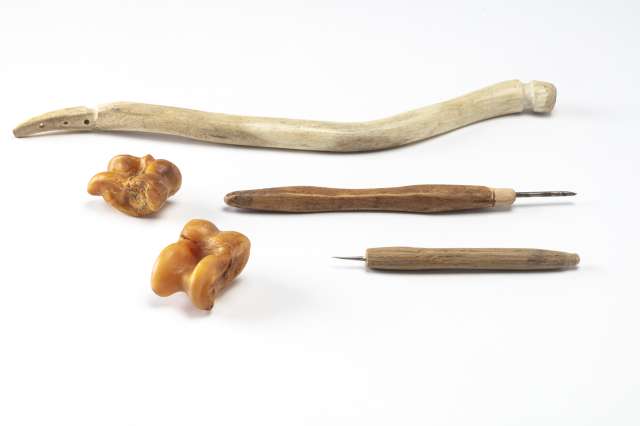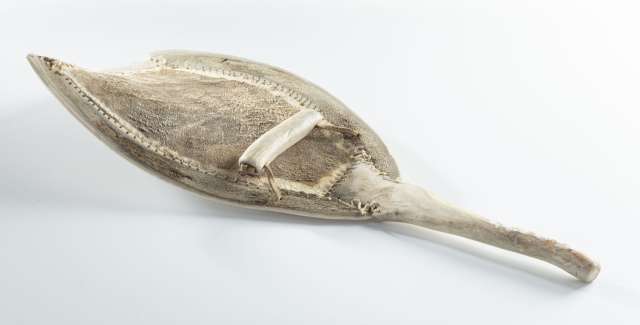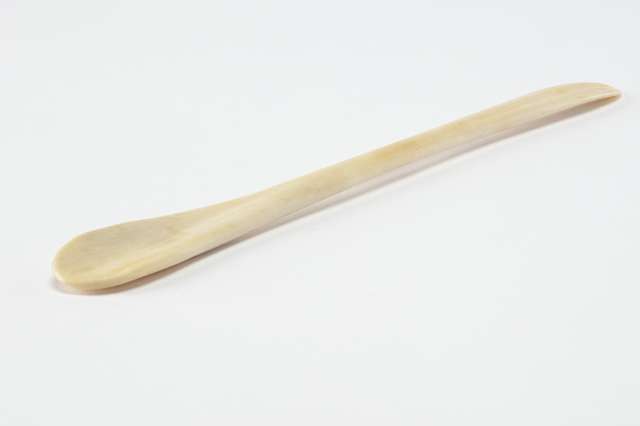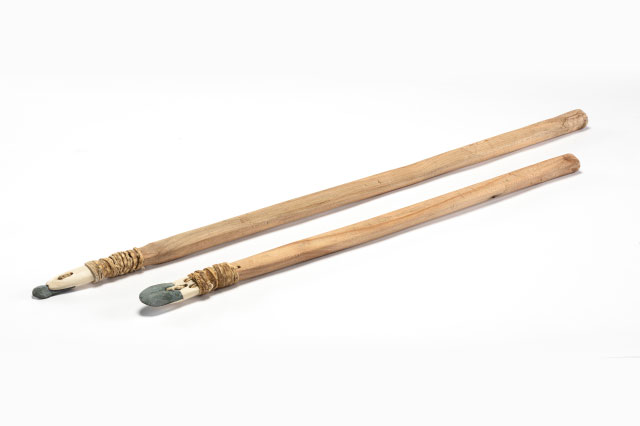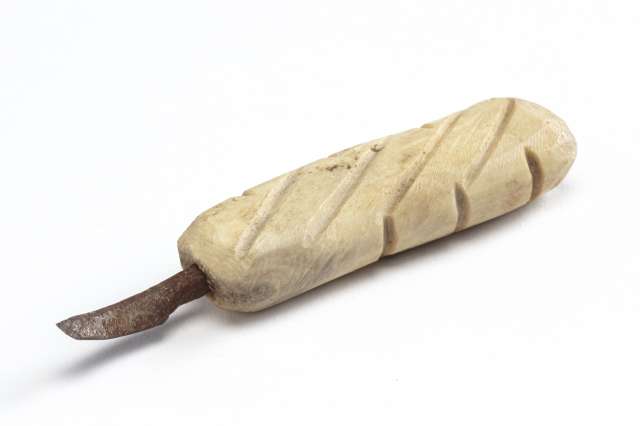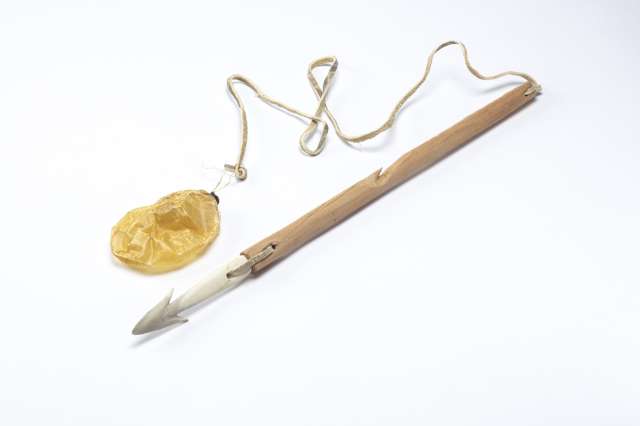Deborah Qaunaq: Here this is me again. My name is [in inuktitut] Uirngut. These [Deborah points at a set of several pieces on the table]
were useful back then. They were very important
before they had tools. This [Deborah takes one of the small bones] is a joint from a caribou, a joint
from the hind legs. Since they had nothing else,
they used a bone for it. This is the place for this [Deborah inserts the end of the drill bit handle in a bone depression].
Bite this part [Deborah puts the bone close to her mouth]. Put this in your mouth and bite. They would use polar bear bones
and antlers to make holes [Deborah takes the drill bow and moves it across the other drill bit end].
Not like this, this way. These were very important.
This isn't made. A person didn't make this. It's a joint,
a joint from a caribou. This is real, not made by a person.
It came that way. These two are the same. This is a bone.
With this part, you need to try hard to not hit this other part [Deborah shows the bone depression and then the end of the drill handle]. It spins.
This, this and this are the hard parts. That is how it
was used. My grandmother's daughter, one she brought up,
used this while she was carving. I witnessed it.
This is a real thing, very useful back then.
It's just a bone. It was not made.
It's the heel. Am I clear? It's been bitten. This one is smaller [Deborah takes the other drill bit].
It's used to make marks, to make small holes.
The bigger one is used to make holes, bigger holes.
Back when they did not have (modern) tools, they were very important.
It was a tool. A drill, with parts where you bite, to make holes. That's how it is.
This is the antler [Deborah takes the drill bow]. I knew someone who had one made from a polar bear rib.
They would make them from polar bear ribs.
That is all I know about them. I don't know anything else.
They were very important back then. They were essential tools.
They were used to make holes on anything,
like drills. They were the only drills at the time.
This is the nail [Deborah shows the pointed end of the drill bits], back then made from shells, probably shells
and small hard stones.
That is all I know about them. I cannot speak too long about them.
I have only described what they are.
People now use power drills. They are using the white man’s
tools.

